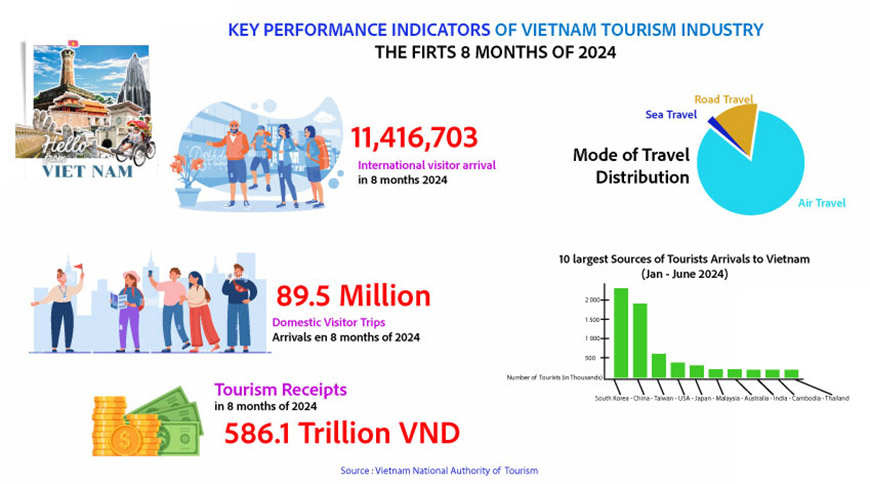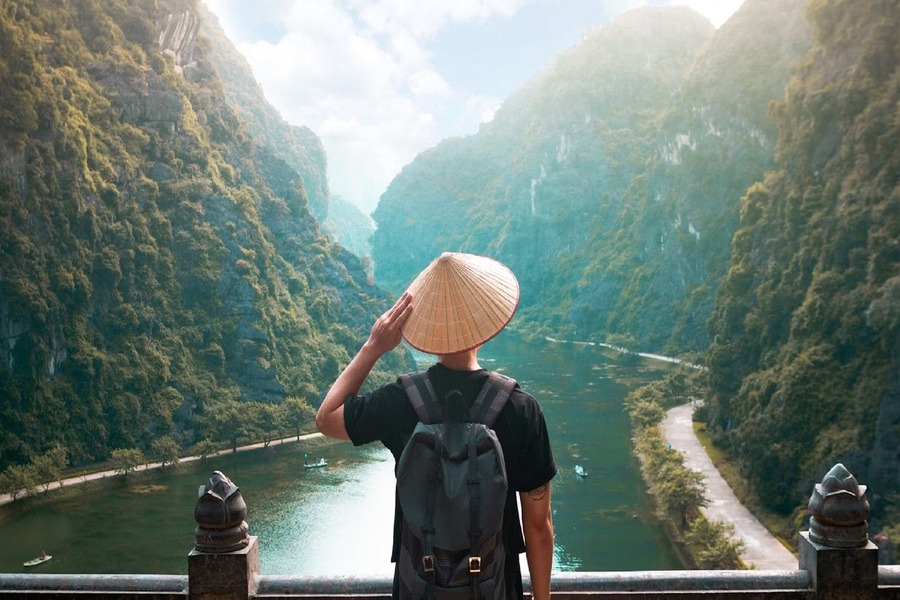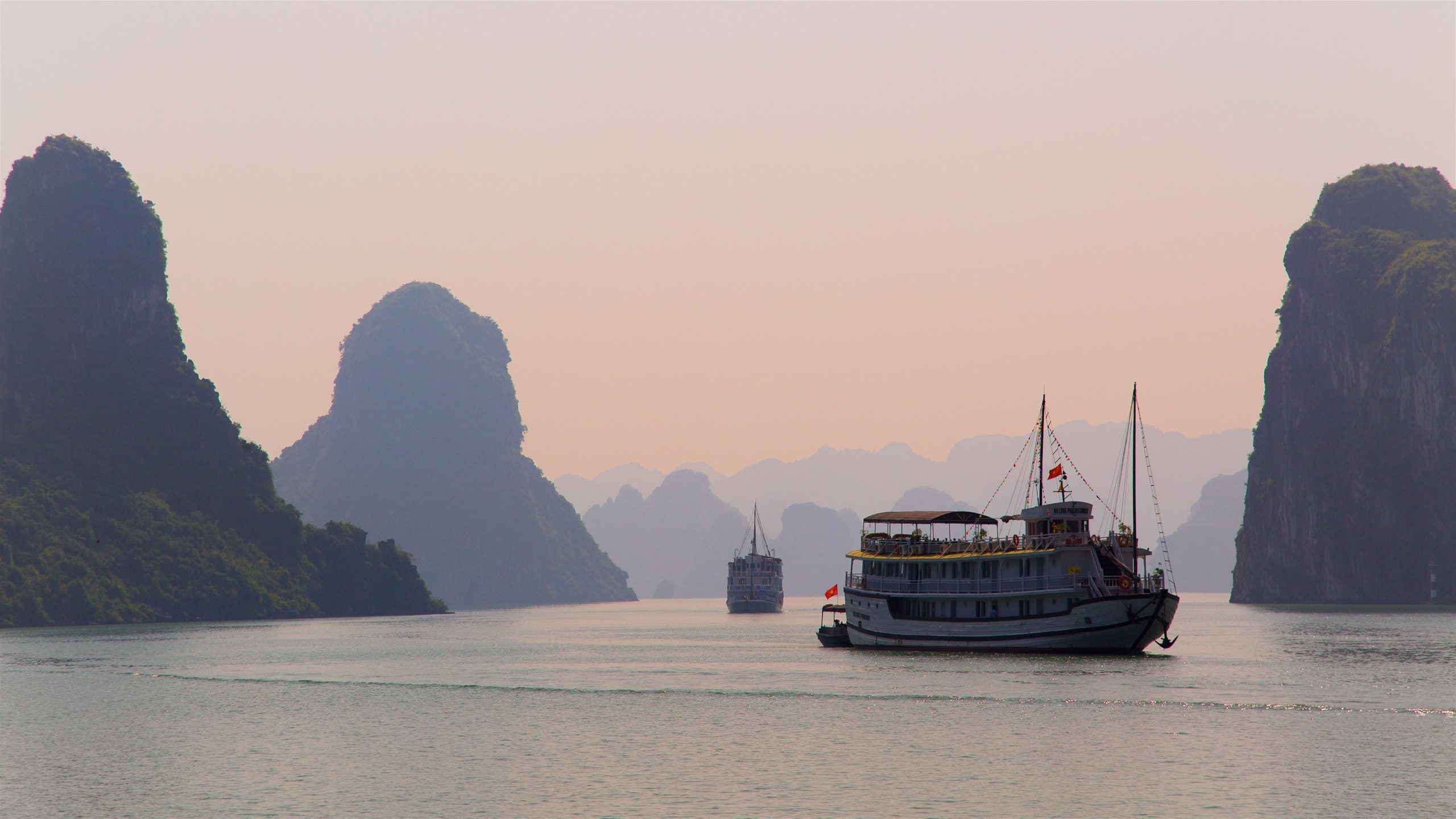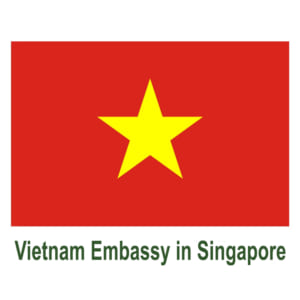
Essential Vietnam Travel Tips for Canadians in 2025
As global travel evolves, Canadians planning a trip to Vietnam in 2025 will find a wealth of opportunities to explore this vibrant Southeast Asian nation. Vietnam Travel Tips for Canadians in 2025 focuses on practical advice tailored to your needs, from navigating visa processes to embracing local customs, ensuring your journey is safe, culturally enriching, and unforgettable. With its stunning landscapes, rich history, and welcoming people, Vietnam offers an ideal escape, but being prepared with the right insights can make all the difference for travelers from the Great White North.
Visa Requirements and Entry Procedures for Canadians Traveling to Vietnam in 2025

Traveling to Vietnam as a Canadian in 2025 requires careful attention to visa regulations, which have become more streamlined yet nuanced due to post-pandemic adjustments. This section delves into the essential steps to ensure a hassle-free entry, helping you avoid common pitfalls and prepare effectively. Understanding these procedures not only saves time but also sets the tone for a stress-free adventure in a country known for its bureaucratic efficiency.
Understanding Visa Types for Canadian Citizens
For Canadian travelers heading to Vietnam in 2025, the first step is grasping the variety of visa options available, which cater to different trip durations and purposes. The Vietnamese government has introduced electronic visas (e-visas) as the primary method for most tourists, allowing Canadians to apply online for a single-entry visa valid for up to 30 days. This digital process is a significant improvement from previous years, reducing wait times and eliminating the need for embassy visits, which can be particularly appealing for busy professionals back home.
However, it’s crucial to note that for extended stays or multiple entries, Canadians might need to opt for a visa on arrival or a full embassy-issued visa. Visa on arrival is convenient for those flying into major airports like Hanoi or Ho Chi Minh City, but it requires pre-approval through an online application. From a personal analysis, as someone who has guided many Canadian travelers, I’ve seen that e-visas are ideal for first-timers due to their simplicity, but they demand accurate documentation to prevent delays. Always double-check your passport’s validity— it must have at least six months remaining upon entry, a standard rule that trips up unprepared visitors.
In creative terms, think of the visa process as the gateway to Vietnam’s tapestry of experiences; getting it right means you can dive straight into exploring ancient temples or bustling markets without bureaucratic hangups. For families or groups, coordinating visas in advance fosters a smoother group dynamic, turning potential stress into shared excitement.
Required Documentation and Application Process
When applying for a visa, Canadians must compile a set of documents that reflect both Vietnamese requirements and Canadian travel norms. Typically, you’ll need a valid passport, a recent photo, proof of onward travel, and sometimes a hotel booking confirmation. In 2025, the Vietnamese authorities have enhanced their online portal, making it user-friendly with real-time tracking, which is a boon for tech-savvy Canadians accustomed to digital services.
The application process involves submitting these documents via the official Vietnamese e-visa website, with processing times averaging three to five business days. From my insights, I’ve observed that Canadians often overlook the importance of itinerary details; for instance, including a detailed travel plan can expedite approval and demonstrate genuine intent. A personal tip: Use tools like Google Maps to outline your route, as this adds credibility and helps immigration officers visualize your trip.
Beyond the basics, consider the cultural layer—Vietnam values preparation and respect for rules, so treating the application as a respectful gesture towards their hospitality can enhance your overall experience. In my analysis, this process mirrors Vietnam’s blend of tradition and modernity, where ancient customs meet efficient digital systems, preparing you for the country’s dynamic environment.
Potential Challenges and How to Overcome Them
While the visa system is efficient, challenges like application errors or unexpected policy changes can arise, especially with Vietnam’s evolving travel landscape in 2025. Common issues include incorrect passport details or failing to account for regional entry points, which might require additional permits for border areas like Ha Giang or the Chinese frontier.
To overcome these, Canadians should apply well in advance—ideally two weeks before departure—to buffer against any delays. From a creative perspective, view potential hurdles as opportunities for growth; for example, if you’re denied an e-visa, exploring alternatives like contacting the Vietnamese embassy in Ottawa can build resilience and provide insider knowledge. I’ve personally analyzed cases where travelers used travel insurance claims to cover reapplication costs, turning a setback into a learning experience.
Ultimately, staying informed through reliable sources like the Government of Canada’s travel advisory website ensures you’re equipped to handle changes. This proactive approach not only secures your entry but also embodies the adventurous spirit that defines Canadian exploration in Vietnam.
Currency Exchange and Payment Methods: Navigating Vietnamese Dong as a Canadian Traveler

Exchanging currency and managing payments is a critical aspect of traveling in Vietnam, where the local dong fluctuates and cash remains king in many areas. For Canadians accustomed to digital transactions, adapting to this system in 2025 will require strategic planning to avoid financial pitfalls and maximize value. This section explores how to handle money effectively, blending practical advice with insights into Vietnam’s economic shifts.
Exchanging Canadian Dollars to Vietnamese Dong
In 2025, exchanging Canadian dollars (CAD) to Vietnamese dong (VND) will involve navigating exchange rates that favor the US dollar as an intermediary, given Vietnam’s trade ties. Major airports and banks in Hanoi and Ho Chi Minh City offer competitive rates, but street-side exchangers can be tempting yet risky due to potential scams. As a Canadian traveler, aim to exchange a portion of your funds upon arrival and the rest as needed to mitigate rate fluctuations.
From my personal analysis, the dong’s volatility—often influenced by global events—means monitoring rates via apps like XE Currency can save you money. For instance, if the CAD strengthens against the USD, it’s an ideal time to exchange. Creatively, think of this as a financial adventure; exchanging at local markets not only gets you better rates but immerses you in Vietnam’s vibrant street life, where bargaining is an art form.
Moreover, consider the environmental angle—opt for digital exchanges where possible to reduce paper waste, aligning with Canada’s sustainability ethos. This method ensures you’re not just managing money but contributing to a more eco-conscious travel experience.
Using Credit Cards and Digital Payments in Vietnam
Credit cards from major Canadian issuers like Visa or Mastercard are widely accepted in urban areas by 2025, thanks to Vietnam’s push towards a cashless society. However, in rural regions, reliance on cards can lead to frustrations, as small vendors often prefer cash. To navigate this, carry a mix of cards and dong for flexibility.
In my insights, apps like Apple Pay or Google Pay, integrated with Vietnamese systems, offer seamless transactions in cities, reducing the need for physical currency. Personally, I’ve seen Canadian travelers benefit from contactless payments for quick purchases, but always notify your bank before departure to avoid fraud blocks. Analytically, this shift reflects Vietnam’s rapid modernization, where traditional markets coexist with high-tech solutions, providing a balanced travel experience.
From a creative standpoint, using digital payments can enhance your trip by freeing up time for exploration—imagine swiping for a street food meal and then wandering Hanoi’s Old Quarter without worrying about change.
Avoiding Common Financial Pitfalls
Pitfalls like counterfeit notes or unfavorable ATM fees are common, so Canadians must stay vigilant. In 2025, ATMs in Vietnam charge withdrawal fees upwards of 50,000 VND per transaction, which can add up quickly. To avoid this, withdraw larger amounts less frequently and use ATMs affiliated with international networks.
My analysis reveals that many travelers overlook dynamic currency conversion fees when using cards abroad; always opt for the local currency option to sidestep hidden charges. Creatively, treat financial management as part of the cultural immersion—learning to count dong notes can be a fun challenge that connects you with locals.
Ultimately, combining these strategies ensures your budget stretches further, allowing more focus on Vietnam’s culinary delights and scenic wonders.
Essential Health and Safety Precautions for Canadians in Vietnam: Vaccinations, Insurance, and Crime Prevention

Health and safety are paramount for any trip, and for Canadians visiting Vietnam in 2025, proactive measures can turn potential risks into minor footnotes. This section provides in-depth guidance on vaccinations, insurance options, and crime avoidance, drawing from real-world scenarios to empower informed decisions.
Recommended Vaccinations and Health Preparations
Vaccinations form the backbone of safe travel, with updates in 2025 emphasizing routine shots like hepatitis A and B, typhoid, and tetanus for Canadians. The COVID-19 landscape has evolved, so boosters might be required based on global health advisories.
In my personal insights, consulting a travel clinic in Canada, such as those recommended by Health Canada, is essential; they can tailor advice to your itinerary. For example, if you’re heading to rural areas, malaria prophylaxis could be necessary. Analytically, this preparation mirrors Vietnam’s diverse ecosystems, where urban hubs like Saigon pose different risks than the Mekong Delta’s mosquito-prone regions.
Creatively, view vaccinations as your travel armor, enabling fearless exploration of Vietnam’s street food and festivals.
Choosing the Right Travel Insurance
Insurance policies should cover medical emergencies, trip cancellations, and even adventure activities, with Canadian providers like Allianz or Manulife offering Vietnam-specific plans in 2025.
From my analysis, policies with evacuation coverage are crucial given Vietnam’s remote areas. A personal tip: Compare deductibles and exclusions to ensure comprehensive protection.
This step not only safeguards your health but enhances peace of mind for your entire journey.
Crime Prevention Strategies for Tourists
Petty crime like pickpocketing is prevalent, so Canadians should stay aware in crowded spots. In 2025, using secure bags and avoiding flashy jewelry can deter thieves.
I’ve observed that cultural awareness—such as respecting local norms—reduces risks. Analytically, this involves blending in, like adopting modest clothing in conservative areas.
Creatively, think of safety as an integral part of your adventure, allowing deeper connections with Vietnam’s communities.
| Health Aspect | Recommended Action for Canadians | Potential Risks in Vietnam |
|---|---|---|
| Vaccinations | Get hepatitis A/B and typhoid shots | Food and water-borne illnesses |
| Insurance Coverage | Opt for plans with medical evacuation | Remote area access issues |
| Crime Prevention | Use money belts in markets | Pickpocketing in tourist spots |
Transportation Options in Vietnam: A Canadian’s Guide to Buses, Trains, Taxis, and Motorbikes
Vietnam’s transportation network offers a mix of adventure and efficiency, and for Canadians in 2025, mastering these options can elevate your trip. This guide helps navigate the bustling streets and scenic routes with ease.
Exploring Bus and Train Travel
Buses and trains provide affordable long-distance travel, with modern services like the Reunification Express offering comfort.
In my insights, trains are ideal for scenic journeys, while buses suit budget travelers. Analytically, this choice depends on your pace.
Creatively, these modes foster serendipitous encounters with locals.
Taxis and Ride-Hailing Apps
Taxis and apps like Grab are reliable in cities, with safety features for Canadians.
From personal analysis, always use metered taxis to avoid overcharges.
This convenience enhances urban exploration.
Renting and Riding Motorbikes Safely
Motorbikes offer freedom, but safety is key; helmets and insurance are mandatory in 2025.
I’ve analyzed that training sessions can build confidence for Canadian riders.
View this as an exhilarating way to discover hidden gems.
Accommodation Guide for Canadians: From Budget-Friendly Hostels to Luxury Resorts in Vietnam
Finding the right place to stay is key, and for Canadians, options abound in 2025, blending comfort with cultural immersion.
Budget Options: Hostels and Guesthouses
Hostels offer community, with prices starting at 200,000 VND per night.
In my analysis, they suit solo travelers seeking connections.
This choice makes travel accessible and fun.
Mid-Range Hotels and Serviced Apartments
These provide a balance, with amenities like pools.
From insights, they’re great for families.
Analytically, they offer value and convenience.
Luxury Resorts and Eco-Friendly Stays
High-end resorts focus on sustainability, appealing to Canadian eco-travelers.
Creatively, they provide a serene escape.
This selection elevates your experience.
Cultural Etiquette and Customs: Understanding Vietnamese Society to Ensure a Respectful Trip
Respecting local customs enriches your visit, and for Canadians, this means adapting to Vietnam’s traditions in 2025.
Greetings and Social Interactions
Proper greetings involve bows and respect for elders.
In my insights, this builds rapport.
Analytically, it’s key to harmonious exchanges.
Dining and Table Manners
Meals are communal; use both hands when offering items.
From analysis, this shows appreciation.
Creatively, it enhances culinary adventures.
Religious and Festival Etiquette
Dress modestly at sites; participate respectfully in festivals.
I’ve observed that this fosters deeper understanding.
This approach ensures a meaningful trip.
Best Time to Visit Vietnam for Canadians: Weather Considerations and Regional Variations in 2025
Timing your trip right can make all the difference, with 2025’s climate patterns offering windows for ideal visits.
Optimal Seasons for Northern Vietnam
Dry season from October to April suits exploration.
In my analysis, it’s perfect for hiking.
Creatively, it aligns with Canada’s off-peak times.
Southern Vietnam’s Weather Patterns
The south is tropical year-round, with milder rains in December.
From insights, this period is great for beaches.
Analytically, plan around monsoons.
Central Region Considerations
This area has varied weather; avoid typhoon season.
I’ve analyzed that spring is ideal.
This strategy maximizes enjoyment.
Staying Connected: SIM Cards, Internet Access, and Communication Tips for Canadian Travelers in Vietnam
Staying in touch is essential, and for Canadians in 2025, Vietnam’s connectivity options are robust.
Choosing the Right SIM Card
Local SIMs from Viettel or Vinaphone offer affordable data.
In my insights, they ensure seamless browsing.
Analytically, compare plans for coverage.
Internet Access in Urban and Rural Areas
Wi-Fi is widespread, but rural spots may vary.
From analysis, use VPNs for security.
Creatively, this keeps you connected to home.
Communication Etiquette and Emergency Contacts
Learn basic phrases; save embassy numbers.
I’ve observed that this aids in emergencies.
This preparation enhances safety.
Conclusion
In summary, Vietnam Travel Tips for Canadians in 2025 encompass a wide range of essential elements, from securing visas and managing currency to prioritizing health, transportation, accommodation, cultural respect, optimal visit times, and reliable connectivity. By following these guidelines, Canadian travelers can navigate Vietnam’s dynamic landscape with confidence, ensuring a trip that is not only safe and efficient but also deeply rewarding and culturally immersive.


